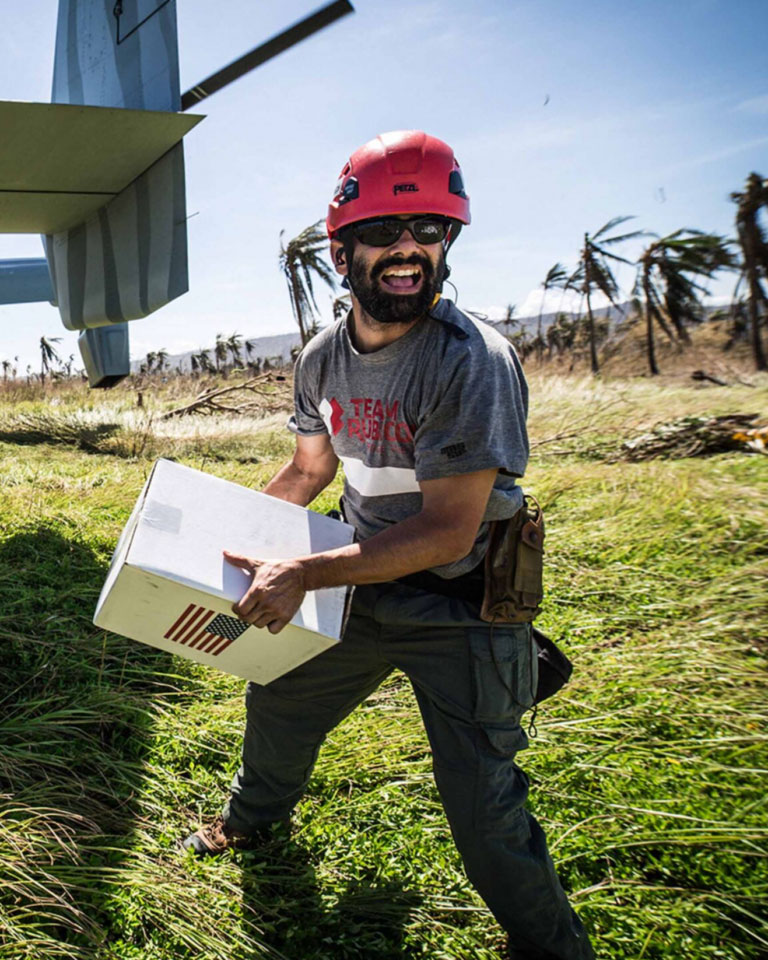The lifeline behind every rescue
When prehospital emergencies happen in Costa Rica, the first responders who arrive are from the Costa Rican Red Cross (CRRC). For decades, the CRRC has been the main, free-of-charge ambulance service provider with the mission to save lives and prevent and alleviate human suffering—a responsibility that places it at the core of Costa Rica’s public health system.
With more than 130 branches nationwide that encompass disaster response, emergency medical care, and health education, the CRRC is an essential part of the country’s social framework. But behind the flashing lights and sirens, a story of transformation and resilience is waiting to be told. Digital tools are making a positive impact by helping local communities in need.
The CRRC is one of 191 independent national societies that make up the International Federation of Red Cross and Red Crescent Societies (IFRC). With nearly 200,000 local branches, 600,000 staff members, and 16 million volunteers worldwide, the IFRC is the largest humanitarian network on the planet. Yet even the most committed organization can be held back by outdated systems. The CRRC, like many of its sister societies, has long worked with paper-based processes and an aging infrastructure. Embracing modern tech offers a key opportunity to enhance coordination among its 5,300 volunteers and 1,000 staff members, ensuring every resource is used to its fullest potential—delivering timely and effective aid.
The platform is a way we can mobilize funds, knowledge, and technical capacity to keep those national societies from being left behind.
More than a connection
Recognizing the urgent need for modernization, the IFRC launched the Digital Transformation Impact Platform (DTIP), a bold initiative aimed at boosting digital literacy and expanding the use of data and technology. In partnership with Microsoft and other collaborators, the IFRC began working directly with national societies to co-develop digital roadmaps tailored to their unique needs. The DTIP is meant to support the least digitally mature and least resourced Red Cross societies.
For the CRRC, this marked the beginning of a new era, reflecting the organization’s commitment to modernization. Starting in the late 2000s the CRRC focused on foundational upgrades—hardware, software, and connectivity. The CRRC acquired the services and support from Microsoft to implement collaborative tools and digital training across its branch offices. Staff and volunteers began using cloud-based platforms for document creation, file sharing, videoconferencing, and scheduling. And an e-learning system made continuing education more accessible than ever.
But the transformation didn’t stop at the desktop.

With a daily average of one emergency per minute, the CRRC’s streamlined operations platform works at peak efficiency to respond to every single one, saving more lives

The CRRC’s new digital tools are boosting the efficiency of humanitarian aid and making a positive impact.

Funds, knowledge, and technical capacity are now mobilized, preventing the IFRC’s least-resourced societies from being left behind
To streamline operations, the CRRC implemented an enterprise resource planning (ERP) system that brought new efficiency to warehouse management, volunteer coordination, purchasing, and more. Then came an exciting leap forward—a GPS fleet monitoring system that tracks every ambulance in real time, capturing data on location, driver behavior, and even CO₂ emissions—and the results were extraordinary.
In just four years, the CRRC saw a 19% reduction in fuel consumption and emissions, and a 15% savings on vehicle purchases.
These important numbers represent lives reached faster, resources used more wisely, and a smaller carbon footprint overall.
When you take the power of real-time data, combine it with the cloud, and support it all with AI, it’s possible to anticipate when people are going to be in need.
Smarter tools for a more efficient tomorrow
Today, the CRRC is continuing to explore new digital frontiers. An online fundraising portal is in the works, along with real-time analytics dashboards to track campaign performance. These tools are helping the organization raise more funds and make smarter, more data-informed decisions about where and how to spend them.
The impact is materializing in powerful, tangible ways. In moments of crisis, help now arrives more prepared because volunteers are better equipped and resources are allocated with greater precision.
The IFRC’s broader vision is equally robust. By building a resilient digital foundation, the organization is preparing its network to meet future challenges—from climate-driven disasters to public health emergencies—with agility and foresight. Advanced analytics and AI are on the horizon, promising to further enhance the speed, quality, and reach of humanitarian services.
For the Costa Rican Red Cross, digital transformation is more than a tech upgrade, it’s an opportunity to maximize resources, strengthen coordination, and enhance efficiency. At times when every second counts, this transformation enables the institution to bring a better service to communities and save more lives.










